
© George Baker. (Click image for larger version)
Kristin Damrow & Company
EAMES
★★★★✰
San Francisco, ODC Theater
25 January 2018
www.kristindamrow.com
www.odcdance.org
I love furniture design – the colors, shapes, materials, fabrics, silhouettes. But when it comes to the history and lineage of the discipline, I’m a novice to be sure. So before heading to the premiere of Kristin Damrow & Company’s EAMES, which mines the life, work and relationship of legendary designers Ray and Charles Eames, some background research seemed a good idea.
I watched a 2011 Eames documentary, which chronicled the personal and professional journey of the wife and husband team. From the trove of material in the ninety-minute film, their curiosity, interdisciplinary pursuits and the magic they found in connective fibers and mechanisms particularly resonated. I re-read my thoughts from RAWdance’s CONCEPT series: 21, which included a brief preview of EAMES. Determination, repetition, searching and specificity permeated that glimpse back in November. I also asked a designer friend to provide some extra context. He explained how the Eames’ were able to bring aesthetics and the human experience together, creating elegant, clean lined, comfortable pieces that were intended to be affordable and replicable. And he went on to share that the duo were instrumental in changing their industry, humanizing modernism with a playfulness and whimsy that contrasted the cold, stark minimalism of some of their peers.
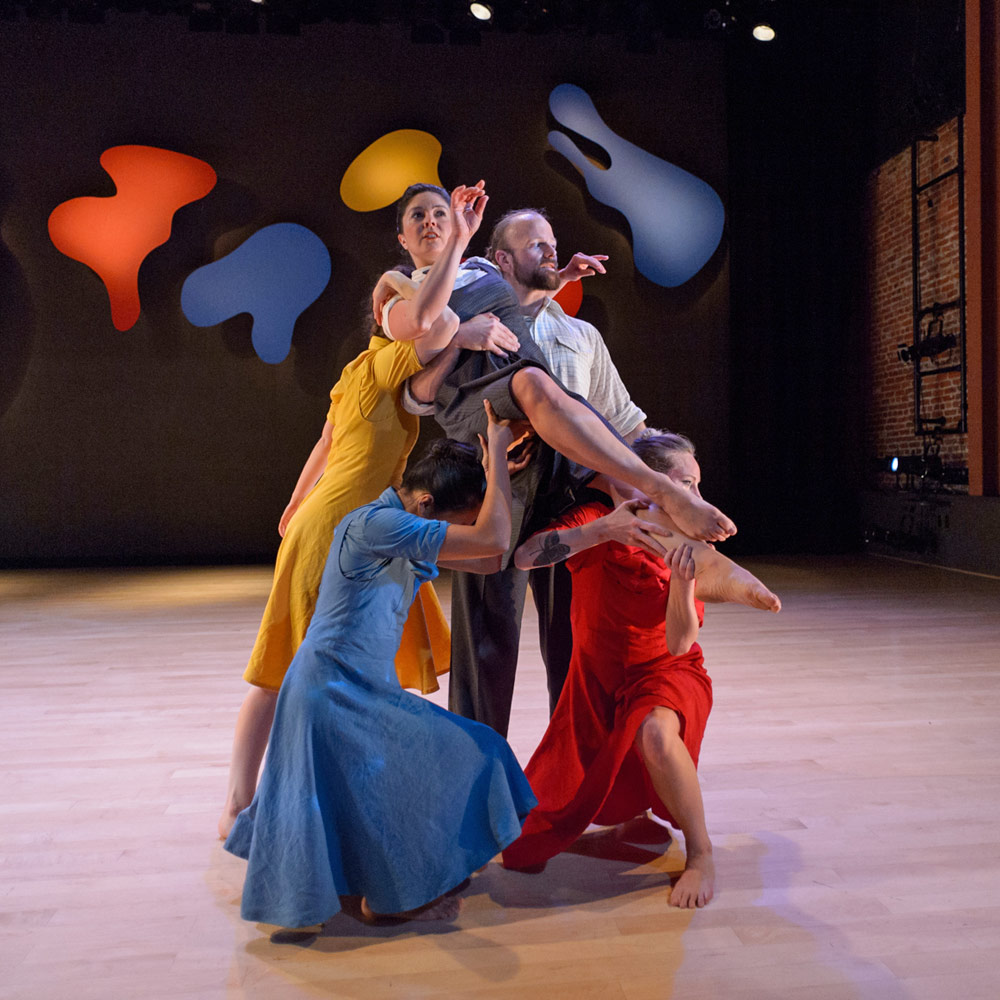
© George Baker. (Click image for larger version)
Choreographed by artistic director Kristin Damrow, the sixty-minute quintet astutely and creatively hinted at these themes through high velocity, yet nuanced movement. Casting-wise, Patrick Barnes alone took on the role of Charles, but for Ray, Damrow envisioned something different. Costumed by Keriann Egeland and Rogelio Lopez in Ray’s signature style (bib front dress, white shirt underneath), Heather Arnett definitely danced the part of Ray in EAMES. But so did Anna Greenberg, Nell Suttles and Allegra Bautista, each contributing a distinct layer of her personality and spirit to the work: Greenberg – Ray’s Independence, Suttles – Ray’s Passion, Bautista – Ray’s Compassion, as was noted in the program. Having four women embody Ray made a powerful statement. As someone who often took second billing to Charles, Ray emerged as the titular character in Damrow’s EAMES.
EAMES’ first two chapters introduced the players. Barnes brought Charles into the room with a solo of discernment, precise intention and a purposeful, driven demeanor (an earlier version of this solo is what I saw back in November). Whether a martial arts-inspired turn and kick, a shoulder stand, a deep lunge or a simple walking transition step, every movement was perfectly placed, calm and smooth. The repeating ‘trial and error’ section was a definite highlight. Barnes would move into a center pool of light, try a physical shape, decide he wasn’t satisfied, move to the side, and then make another attempt. And during this first solo, Barnes continually reverted to a specific posture, one that would recur throughout EAMES – his hands in his pockets, a cool look of inner contemplation on his face.
In contrast, outward sensibility took over when the four Rays, led by Arnett, took the stage for their opening variation. The first thing one noticed was Arnett’s gaze. Her eyes scanned the space with a palpable joy and curiosity, excited at what she might discover in her environment. This inquisitive quality continued as the quartet cycled through various movement phrases, at times, swirling and intertwining together as one being. But there was also something wonderfully individual that Damrow established in this early sequence. The four rarely danced in absolute unison, instead marking the choreography with their own dynamics, their own intention and their own timing. It made such sense that ‘passion’ might accent a movement differently than ‘independence’, or how ‘compassion’ might take more time with a comforting hand gesture. But as EAMES continued, there would also be moments where Greenberg, Suttles and Bautista would dance in fierce unison, making yet another bold narrative comment.

© George Baker. (Click image for larger version)
Next, Barnes joined the women and the five would remain together for the majority of the dance. At first, he walked right past Arnett, seemingly fixed on some other task, not noticing her at all. Once they did connect, they playfully engaged in a game of poses and shapes, experimenting with how the movement looked as they changed directions and facings. But this playful phrase, along with others peppered throughout EAMES, was short-lived, quickly morphing into moments of disconnect, and even to absence and distance. It was then that the unison of Greenberg, Suttles and Bautista spoke volumes. In them, Ray’s whole being united together with strength and resolve to face a difficult, challenging reality. And from a strictly choreographic perspective, their floorwork included some stunning lines and positions of the body.
Greenberg, Suttles and Bautista each had a featured trio with Arnett and Barnes, injecting their respective independence, passion and compassion into separate tableaux with Ray and Charles. As a choreographic grouping, I think that the trio can be pretty tough to conquer – the uneven number, how it often can look like a duet with a third wheel. True to the Eames’ spirit, Damrow experimented with a number of ways to choreographically connect the three dancers, utilizing unison, lifts, balances and contact-improvisation like clusters. While all three trios were distinct and visually compelling, on opening night, a few of the individual movements proved elusive.
In a fitting coda for a work where Ray Eames was the protagonist, the four women closed the scene. Together in a line, they reached their arms out into the expanse, carving the space with a texturally rich series of straight lines and curved arcs. Soon the legs, spine and core appropriated this symbiotic and heady mix; the stage bubbling with living, fluid physical design.









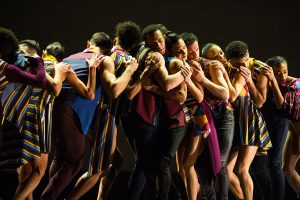


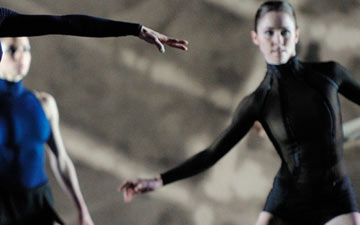
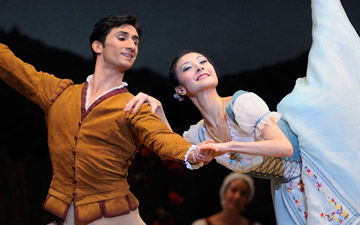
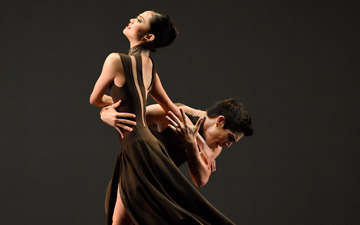


You must be logged in to post a comment.